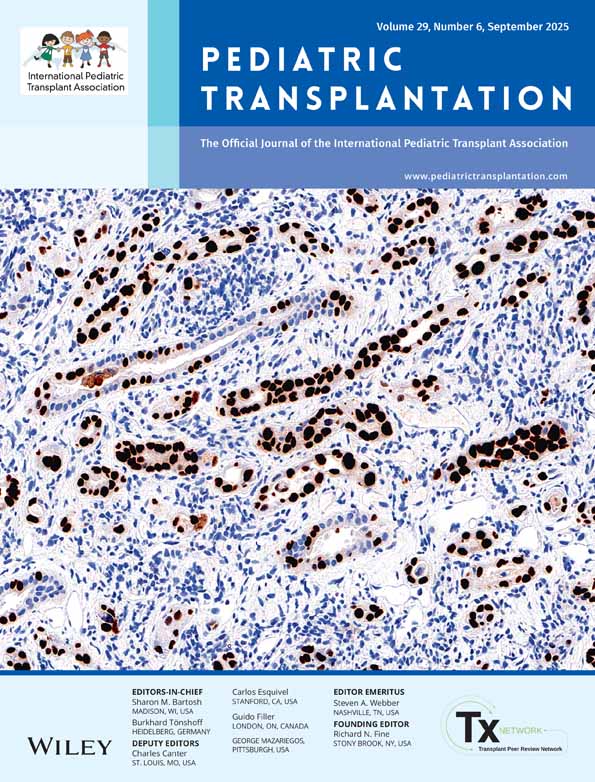Mycophenolate, tacrolimus and post-transplant lymphoproliferative disorder: A report of the North American Pediatric Renal Transplant Cooperative Study
The North American Pediatric Renal Transplant Cooperative Study (NAPRTCS) is a voluntary collaborative effort comprising over 130 pediatric renal disease treatment centers in the USA, Canada, Mexico and Costa Rica. It is supported by major, unrestricted educational grants from Novartis, AMGEN and Genentech. Participating NAPRTCS centers are listed in the most recent 1998 NAPRTCS Annual reports in Pediatr Transplant 2000; 4: 221–234 and 396–399.
Abstract
Abstract: Tacrolimus (FK506) and mycophenolate mofetil (MMF) have been reported to increase PTLD risk. The NAPRTCS registry database now has several years of data on FK506 and MMF use in pediatric kidney transplantation. We analyzed the data registry to determine if the risk of PTLD was enhanced by the use of MMF or tacrolimus in initial immunosuppression. Data on day 30 therapy in the PTLD group were compared to corresponding data in patients who did not develop PTLD. Data were analyzed using SAS software and a log-rank test for significance. As of October 2000, there were 108 cases of PTLD in 6720 total transplants(1.60%). The use of MMF at day 30 was not a significant risk factor (0. 78% PTLD rate vs. 1.78% in cohort, RR = 1.05, p = 0.89). The relationship of FK506 with PTLD was linked to transplant era, 1987–95 or 1996–2000. In the earlier era, use of FK506 at day 30 was associated with PTLD (seen in 7/15 patients given FK506, RR = 47.7, p < 0.001). However, in the more recent era, there was no such significant association (seen in 3/313 patients given FK506, RR = 1.28, p = 0.692). There have been no cases of PTLD in 197 patients who received both FK506 and MMF at day 30. We conclude that FK506 and MMF use are not currently associated with increased risk of PTLD in pediatric kidney transplants.




